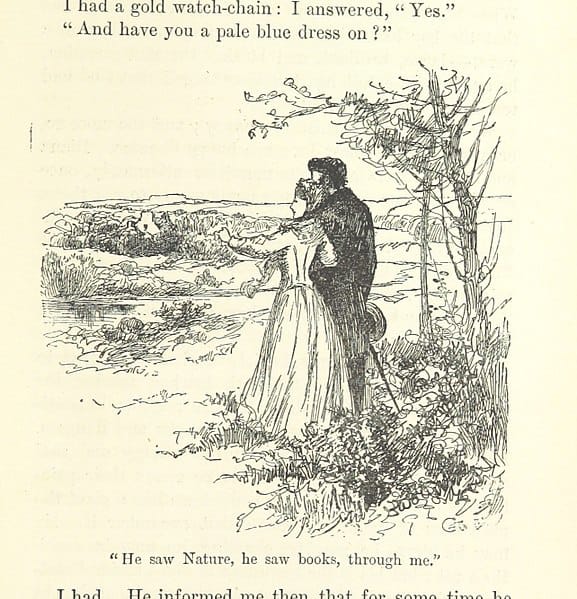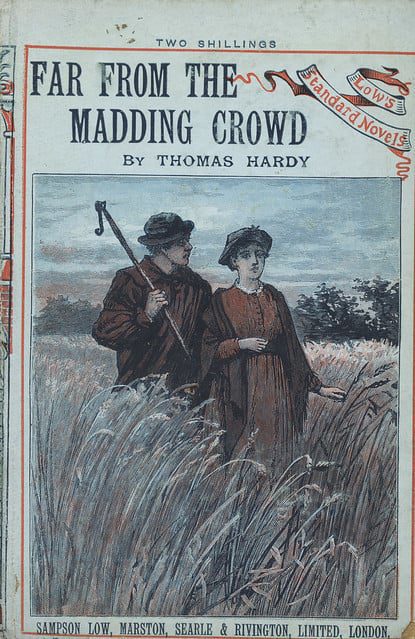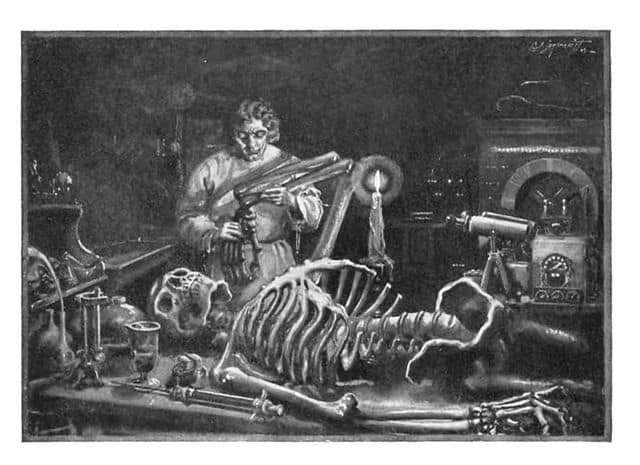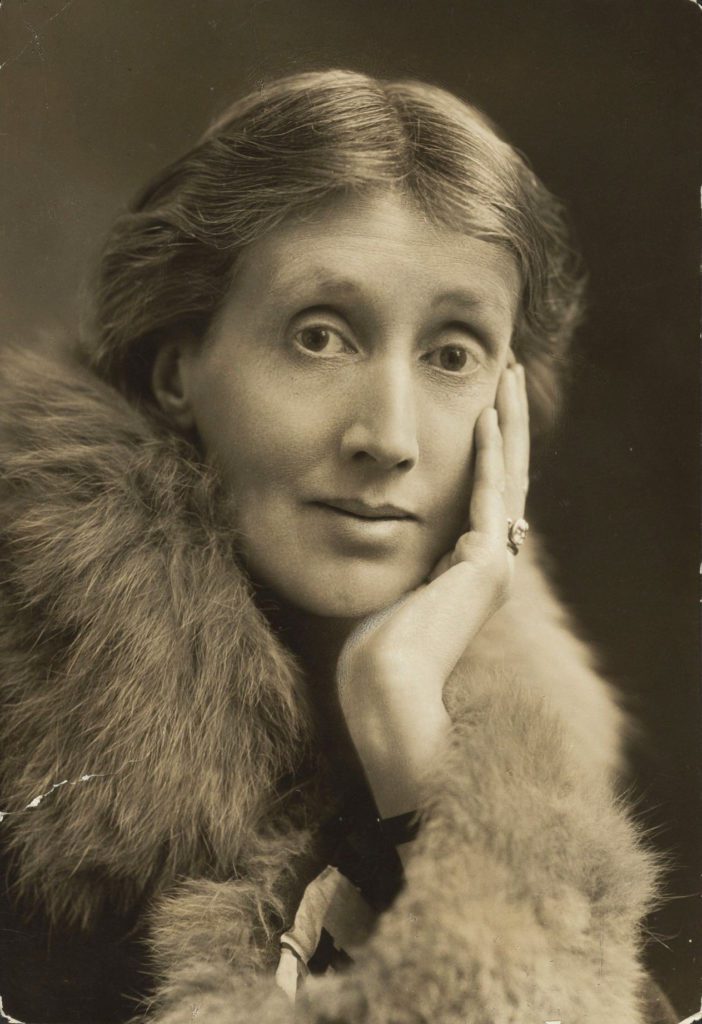10 British Classics: Books to Read
I love all types of literature. America, French, Russian, and of course…British! The Brits have produced some of the most classic books of all time, and to be honest with you I had a really hard time narrowing my list down to just 10.
I decided to stick with what I know, and tell you a little bit more about some British classics that I have personally read and loved. The list of must-read British classics could be (and should be!) much longer, so if I’ve left out one of your favorites, please forgive me!
Keep reading for my list of 10 British classics if you’re looking for a few new books to add onto your “to-read” lists.
1. Wuthering Heights by Emily Brontë
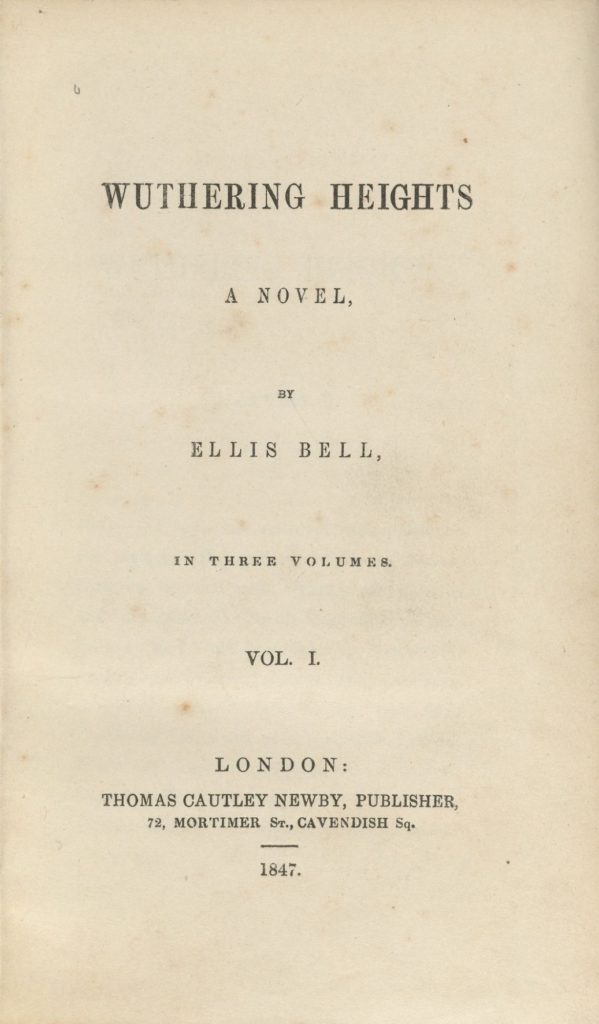
Title page for the first volume of the first edition of Wuthering Heights by Emily Brontë, published in 1847 under the pseudonym Ellis Bell. Thomas Cautley Newby, publisher – WikiCommons
While I’ve organized this list in no particular order, Wuthering Heights by Emily Brontë has got to be one of my favorite books of all time. Not only is the story tremendously well-written, I love the story of Brontë and her sisters.
The Brontë family lived in Yorkshire, England in the 19th century. The family included three sisters: Emily, Charlotte and Anne. All three of the sisters were very talented writers (you’ll meet Charlotte later on!), and their novels are celebrating in British literature.
Wuthering Heights was first published in 1847 under the pseudonym Ellis Bell. At this point in history, female writers were not respected and in order to have better success, Brontë decided to publish under a male name. Her tactic worked, and her novel sold many copies.
That being said, reviews of the novel were polarized, with some loving it, and others shocked by it’s portrayal of physical and mental abuse. The novel tells the story of an odd family unit that lives in an estate called Wuthering Heights. The story is told from two points of view: from a traveler named Lockwood, and the housekeep named Nelly Dean.
It is the only novel ever published by Emily Brontë.
My favorite quote: “He’s more myself than I am. Whatever our souls are made of, his and mine are the same.”
2. Great Expectations by Charles Dickens
Great Expectations by Charles Dickens is a novel that tells the story, from youth until adulthood, of the main character, an orphan named Pip. Like most of Dickens’ work, he aims to shine the light on poverty in England in the early 19th century.
The story was first published as a serial that appeared in Dickens’ own weekly periodical, All the Year Round. The public loved the story, and with that encouragement Dickens happily published it as a full length novel with three volumes.
Inside, Dickens touches on themes such as riches and poverty, rejection and love, and the triumph of good over evil. If you’ve read any of his other works, you know that this goes along with what Dickens usually writes about.
I read this book in about 2 days one rainy weekend. If you’re a fan of Dickens, I definitely recommend it!
My favorite quote: “Heaven knows we need never be ashamed of our tears, for they are rain upon the blinding dust of earth, overlying our hard hearts. I was better after I had cried, than before–more sorry, more aware of my own ingratitude, more gentle.”
3. Jane Eyre by Charlotte Brontë
Enter: the second Brontë sister on my list! Like her sister, Charlotte Brontë published her work under a different pen name, this name calling herself Currer Bell. Brontë may have been hesitant to publish under her own name in the late 19th century, but today she is praised and revered.
Famous authors such as Marcel Proust and James Joyce have credited her as their inspiration, and critics say that she revolutionalized prose fiction. Jane Eyre is considered to be one of the first instances where the main character’s personal and moral development is discovered through a first person narrative.
The main character of Jane was also revolutionary for it’s time. She battles with subjects such as feminism, class, religion and her sexuality.
Jane Eyre is a must read! So, get out there and start reading it yourselves.
My favorite quote: “I am no bird; and no net ensnares me: I am a free human being with an independent will.”
4. 1984 by George Orwell
The first time I read 1984 by George Orwell I was in high school and it was required reading. But, even as an angsty 16 year old I appreciated this novel! When read today, it is a eery representation of the world that we live in.
While we may not have a “Big Brother” watching us, Orwell touches on things like propaganda and an omnipresent government, things that are unfortunately a reality for many people around the world.
Orwell wrote the book when he was in a pretty bad place. He was at a farm called Barnhill in Scotland and was suffering from tuberculosis. He wrote most of the book in the mid 20th century, but the story itself is set in the year 1984.
Read this book if you believe in conspiracy theories. Or, if you like science fiction that comes just a little too close to reality.
My favorite quote: “Who controls the past controls the future. Who controls the present controls the past.”
5. Pride and Prejudice by Jane Austen
I recently finished this novel in about 1 week! Can you tell I like to read?! Pride and Prejudice was written by Jane Austen in the early 19th century. Like most female authors at the time, Austen published the book under a pen name. It was her second novel, after much success of her first, Sense and Sensibility.
Sense and Sensibility was originally published anonymously, with a vague “By a Lady” appearing on the first page. And, Austen actually paid her publisher to get her book out there, not the other way around. She also paid him a commission on all of the copies that were sold. These were the lengths a female author had to go through at the time. When Pride and Prejudice was published, the author was listed as “By the author of Sense and Sensibility”
While the book is fairly funny, it also touches on more serious issues such as women’s rights at the time. As a modern reader, we might get the feeling that the Bennet sisters and their mother are completely obsessed with marriage. But, it is important to understand how important it was to be married at the time. Single women were looked down upon, and often struggled to survive without a husband. You can expect to learn more about this in Pride and Prejudice.
My favorite quote: “I cannot fix on the hour, or the spot, or the look or the words, which laid the foundation. It is too long ago. I was in the middle before I knew that I had begun.”
6. Far from the Madding Crowd by Thomas Hardy
The first time I heard about Far from the Madding Crowd, was after I watched the 2015 film starring Carey Mulligan. I absolutely loved the movie, and wanted to learn more about where the story came from. Not too much to my surprise, it was originally a book written by the famous novelist Thomas Hardy.
Far from the Madding Crowd was Hardy’s fourth novel, and his first major success. It was originally published anonymously as a serial in Cornhill Magazine, and the public ate it up. There are several different stories woven into one, making the novel very easy to read. Trust me, you’ll have a hard time putting it down!
I loved this novel because of Hardy’s writing style, and for it’s insight into Victorian England. It’s a love story, and in 2007 it was listed as number 10 on The Guardian’s list of the greatest love stories of all time. Rightfully so, in my opinion!
My favorite quote: “We learn that it is not the rays which bodies absorb, but those which they reject, that give them the colours they are known by; and in the same way people are specialized by their dislikes and antagonisms, whilst their goodwill is looked upon as no attribute at all.”
7. Frankenstein by Mary Shelley
I love Frankenstein because it is a classic, but also because I love Mary Shelley and learning about her life! Daughter of one of the first feminists, Mary Wollstonecraft, and philosopher William Godwin, Shelley was born into a world that expected a lot from her at a very young age. Talk about pressure!
The story was thought up as part of a competition between Shelley, her future husband Percy Shelley, Lord Byron and John William Polidori to see who could come up with the best horror story. Shelley (or, Mary Godwin at the time), produced Frankenstein and Polidori The Vampyre. Ah, good old fashioned literary friendships. I love it!
The story of Frankenstein is actually the story of Shelley. She is the monster that was created by a mad doctor, and she is the monster that ultimately goes crazy. I won’t say anything more to spoil the story!
My favorite quote: “Nothing is so painful to the human mind as a great and sudden change.”
8. Middlemarch by George Eliot
If you consult any top list of British classics, you’ll likely find Middlemarch by George Eliot on the list, and more likely, ranked as number one! I bet you’re thinking that George Eliot is a man. Wrong! Eliot is actually a woman named Mary Anne Evans. I think you’ve all got the idea by now that women were wary of putting their names on their literary works up until the mid-20th century.
When the novel was published in 1871-1872, it was met with mixed reviews, but today it is considered one of the best English novels ever published. It is set in a manufacturing town in the mid-19th century, and touches on subjects such as women’s rights, political reform and education.
Eliot/Evans also discusses historical events of the time such as the 1832 Reform Act, the immersion of the railway system in England, and the death of the current king, George IV. But, don’t think you’ll be getting some stale historical account. The novel is also very humorous!
My favorite quote: “It is always fatal to have music or poetry interrupted.”
9. The Picture of Dorian Gray by Oscar Wilde
Oscar Wilde’s masterpiece, The Picture of Dorian Gray, is one of my favorite novels of all time! While it took me a few chapters to get into it, and wrap my head around the language, once I was there, I was hooked.
It is the only novel written by Wilde, who is more well known for his plays. It was first published in Lippincott’s Monthly Magazine. The editor’s removed up to 500 words from the original version, believing it was too controversial for the British public. Even so, the public was offended by the story. They felt that Wilde was violating laws that protected the public’s morality. So, how badly do you want to read this book?!
To our modern eyes, the content isn’t that shocking. But, it is an excellent story! And, I believe it is an excellent commentary of social pressures. Read this book!
My favorite quote: “The books that the world calls immoral are books that show the world its own shame.”
10. To the Lighthouse by Virginia Woolf
I’m rounding out my list with a novel from another female author, Virginia Woolf! This book is different from the rest on my list, as it is not written like a traditional novel. There is hardly any dialogue or action or events that take place. Woolf wrote To the Lighthouse as thoughts and observations.
The book touches on the complexity of human relationships and of what it means to experience loss. It is a hard novel to read and understand as their is no consistent narrator to guide the reader. But, this means that there is a lot of room for the reader to come to their own opinions on the characters in the book, and on the premise of the novel itself.
My description is probably as ambiguous as the novel is itself, so I’m sorry if I’ve left you wanting more! That’s all the more reason for you to get out there and discover this masterpiece for yourselves.
My favorite quote: “What is the meaning of life? That was all- a simple question; one that tended to close in on one with years, the great revelation had never come. The great revelation perhaps never did come. Instead, there were little daily miracles, illuminations, matches struck unexpectedly in the dark; here was one.”
Conclusion
I hope you’re ready to go to your local bookstore, you’ve got some reading to do! Save this post for those moments when you’re in the mood to get your bookworm on, but aren’t sure where to start. You’re sure to enjoy at least one, if not all, of the books on my list!
If you want to learn more about English literature, why not hop on one of our walking tours in London? Our local guides will likely have even more recommendations for you! Click here to learn more and to make your bookings. Until then…happy reading!
Planning a trip to Paris ? Get ready !
These are Amazon’s best-selling travel products that you may need for coming to Paris.
Bookstore
- The best travel book : Rick Steves – Paris 2023 – Learn more here
- Fodor’s Paris 2024 – Learn more here
Travel Gear
- Venture Pal Lightweight Backpack – Learn more here
- Samsonite Winfield 2 28″ Luggage – Learn more here
- Swig Savvy’s Stainless Steel Insulated Water Bottle – Learn more here
Check Amazon’s best-seller list for the most popular travel accessories. We sometimes read this list just to find out what new travel products people are buying.






